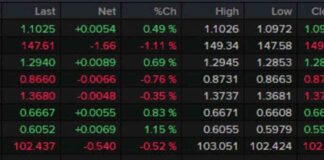The focus was on US retail sales for October, which came in lower than expected at -0.1% compared to the expected +0.3%. Despite the headline number, some analysts pointed out that there was a strong September revision, while others mentioned a negative August revision, leading to mixed reactions. Overall, many believe that consumer spending in the US will remain healthy, with a potential post-election boost.
In terms of currency markets, the big mover was USD/JPY, which saw a significant drop of 200 pips. While there were talks of intervention and verbal support, the main driver behind the move remains uncertain. The Federal Reserve’s less dovish stance could provide some support for the US dollar, but concerns about economic weakness, tariffs, and deficits linger.
On the other hand, the British pound continued its decline for the sixth consecutive day, breaking the August low and reaching 1.2600. The Canadian dollar also struggled, hitting a four-year low against the US dollar at 1.4105, partly due to falling oil prices.
Global equities faced challenges, especially in China, where stocks underperformed. This raised concerns for currencies like the Australian and New Zealand dollars, although they managed to hold steady by the end of the week.
As the trading week came to a close, there was no clear narrative, with a mix of sell-offs in stocks, bonds, and equities. Despite this, the US dollar did not show much strength against other major currencies like the euro and Australian dollar.
Looking ahead, market participants will closely monitor upcoming economic data releases and central bank statements for further insights into the direction of major currencies and asset classes. Stay tuned for more updates and have a great weekend.

















